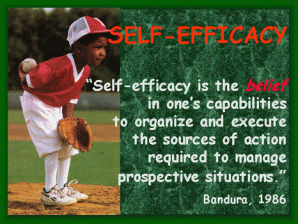We all know fear of movement (fear avoidance) can be a treatment barrier when interacting with a patient experiencing persistent low back pain (not sure if persistent or chronic is more appropriate, or less scary). It’s safe to say most clinicians are probably familiar with Waddell’s FABQ Questionnaire, which was developed to investigate fear-avoidance beliefs among LBP patients in the clinical setting.1 It also became more popular in clinical use when Tim Flynn et al. developed a clinical prediction rule which attempted to predict successful outcome of manipulation in patient’s with LBP, they found FABQ score was 1 of 5 variables that increased likelihood of success.2
I’m the first one to acknowledge the fear of movement may play a GIGANTIC role in the outcome of patient’s with persistent low back pain, and research shows that increased fear can actually lead to increased pain. It’s also been shown that utilizing therapeutic neuroscience education can reduce fear in patients and encourage movement, therefore decreasing pain. TNE has also been shown to affect another domain that is often less discussed in the clinical setting……self efficacy.
Bandura (1977) describes self-efficacy as “the confidence the person has in his or her own ability to achieve a desired outcome.” Looking at this definition, one can see how this concept is crucial in helping someone with persistent low back pain. So which one should we focus on more? Does fear of movement or self-efficacy play a bigger role in helping patients with persistent back pain? Which one is more important in deterring disability?
Menezes Costa, Maher, McAuley et. al. (2011) attempted to answer some of these questions. Their study aimed to investigate whether pain self-efficacy and/or fear of movement mediate the relationship between pain intensity and disability in patients with recent onset chronic low back pain. They found that, when measured at the same time, both pain self-efficacy and fear of movement beliefs partially mediated the effects of pain intensity on disability at the onset of chronic low back pain. However in the longitudinal analyses, only improvements in self-efficacy beliefs partially mediated the relationship between changes in pain and changes in disability over a 12 month period. They concluded that pain self-efficacy may be a more important variable than fear of movement beliefs in terms of understanding the relationship between pain and disability.3
So what? As clinicians we often jump right to fear of movement as a predictor of disability, however this study highlights the importance of interventions aimed at improving self-efficacy in the management of these patients.”3
1)Waddell G, Newton M, Henderson I, Somerville D, Main CJ. A Fear-Avoidance Beliefs Questionnaire (FABQ) and the role of fear-avoidance beliefs in chronic low back pain and disability. Pain 1993; 52:157-168
2)Flynn T, Fritz J, Whitman J, Wainner R, et al. Clinical Prediction Rule for Classifying Patients with Low Back Pain Likely to Respond to a Manipulation Technique. Spine (In Press) 2002.
3)Menezes Costa L, Maher C, McAuley J, et al. Self-efficacy is more important than fear of movement in mediating the relationship between pain and disability in chronic low back pain. Eur J Pain 2011; 15:213-219




